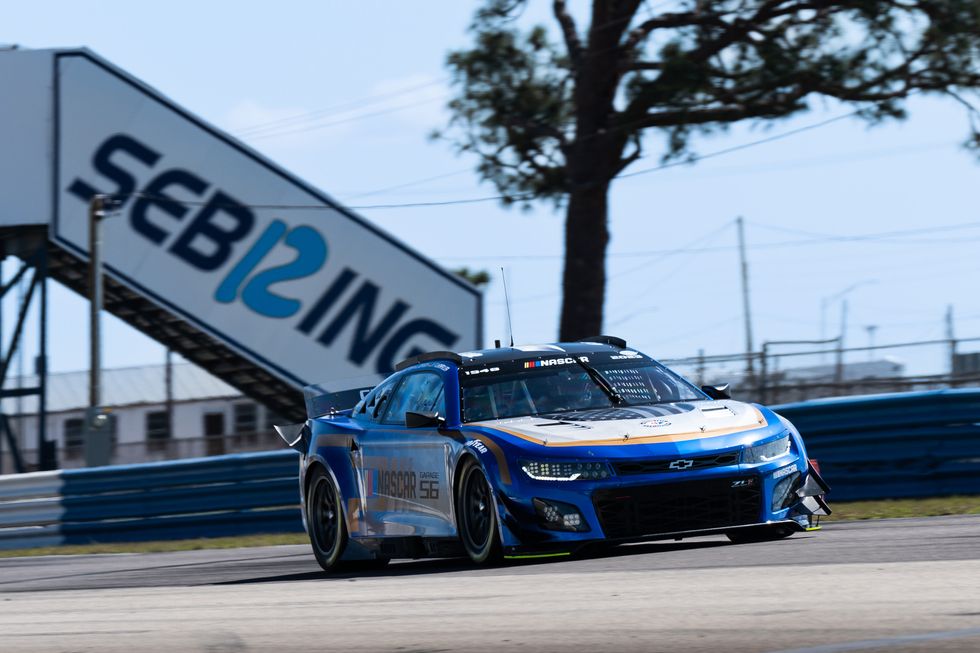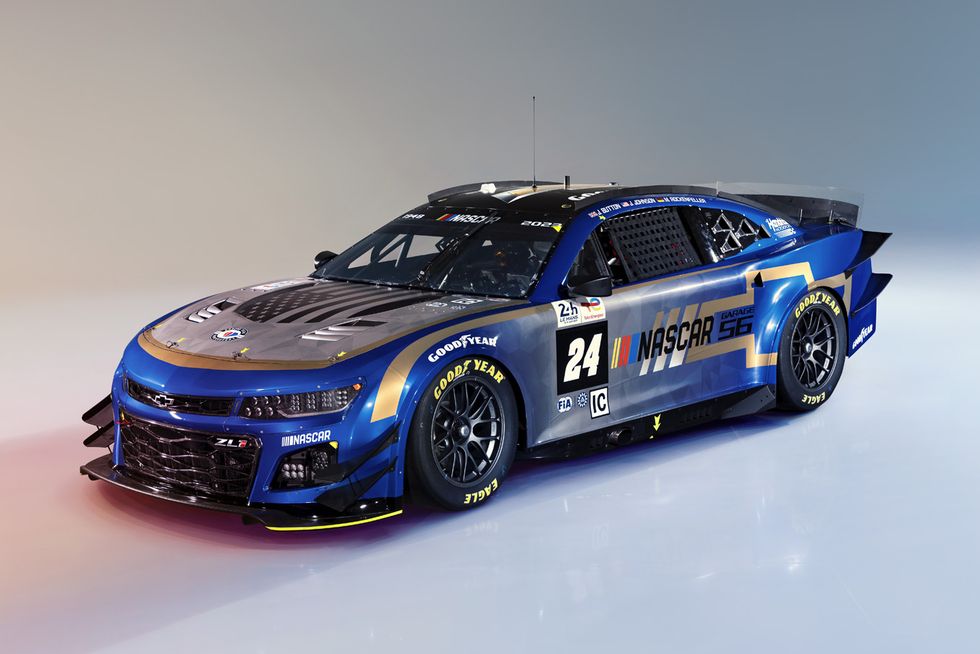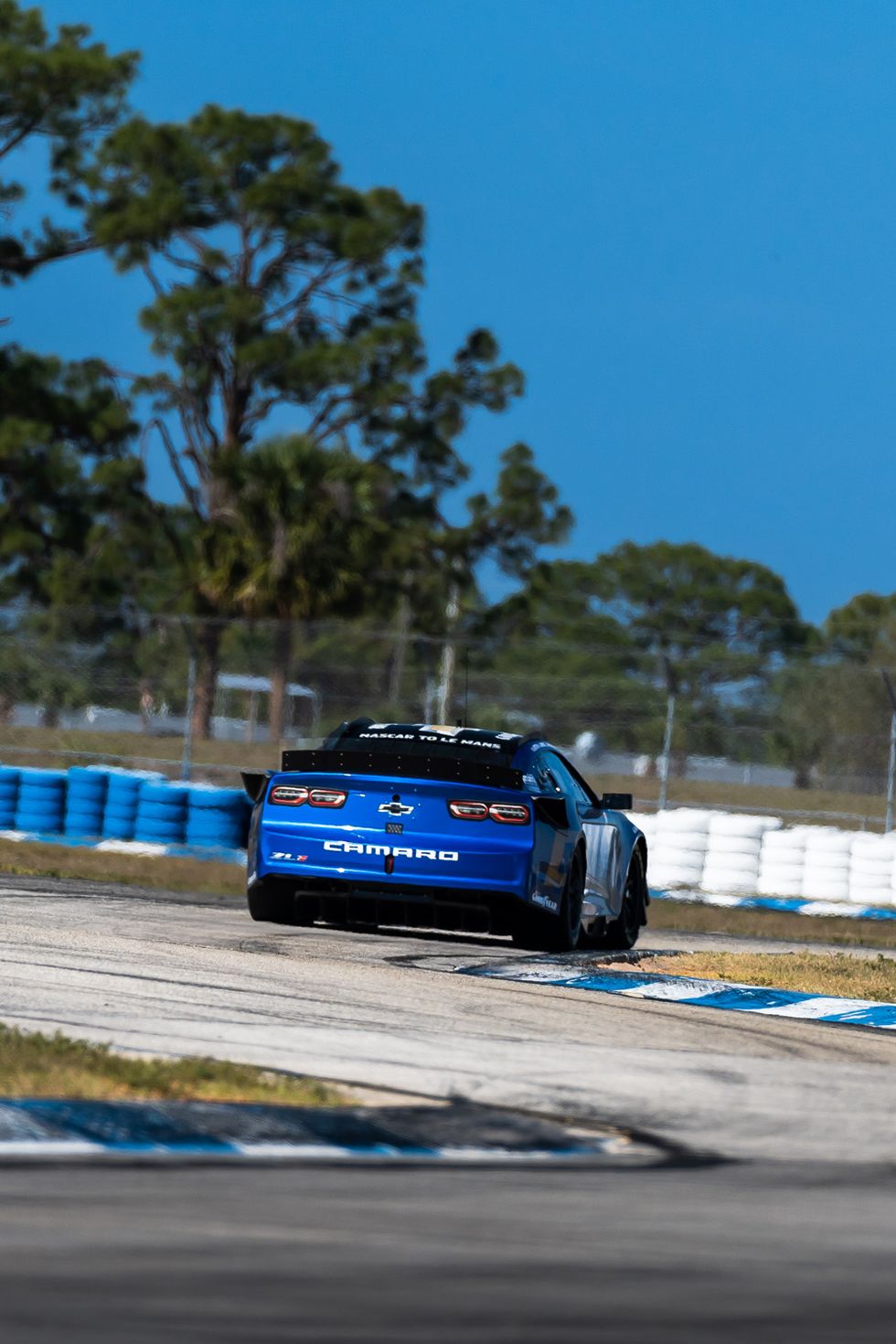A modified Cup Series Camaro will take on the Garage 56 entry for the 2023, June 10-11, 24 hours of Le Mans.
Get ready to embark on a thrilling journey from the heartland of American motorsports to the historic roads of France.
It might seem like an unlikely crossover, but NASCAR is gearing up to make its mark at the iconic 24 Hours of Le Mans, an event that has traditionally been the domain of European endurance racing.
This transatlantic motorsport fusion promises to be an exhilarating spectacle, with American-flag shirts and passports in hand.
For years, American sports-car teams have quietly competed on the hallowed asphalt of the Mulsanne straight at Le Mans. NASCAR, on the other hand, has been a rare sight at this celebrated event, with just one previous appearance on its resume.
The clash of these two racing worlds is set to redefine the limits of what's possible on the track. Fueling this audacious venture is the Automobile Club de l'Ouest (ACO), the custodian of Le Mans and a torchbearer for innovation in motorsports.
In 2012, the ACO introduced a groundbreaking program known as Garage 56, aimed at fostering technical ingenuity on the racetrack. Every year, the ACO extends an exclusive invitation to a team to participate in this prestigious program at Le Mans, pushing the boundaries of what's achievable in the automotive world.
Le Mans Garage 56

Garage 56 is where dreams of revolutionizing motorsport come to life. In the past, the brave souls who dared to tread these uncharted waters have experimented with alternative fuels, pushing the envelope of performance while embracing sustainability.
Some have even dared to design cockpits tailored for disabled drivers, emphasizing the program's commitment to inclusivity and innovation. It's worth noting that this daring endeavor has been no walk in the park.
Only two teams from the Garage 56 category have managed to navigate the grueling 24-hour marathon and cross the finish line.
The program, however, has consistently delivered a masterclass in pushing the envelope of what's possible in motorsport. One of the most memorable stars of Garage 56's illustrious history is the Deltawing, a revolutionary prototype that left an indelible mark on endurance racing.
The Deltawing's design was a testament to its creators' obsession with aerodynamics and weight reduction. Its narrow front track and distinctive wingless profile made it a striking anomaly in the world of motorsport.
Instead of relying on traditional wings for downforce, the Deltawing leaned heavily on its diffuser, a daring departure from convention that allowed it to sip fuel and use fewer tires than its competitors.
Related: Ten Nigerian Race Car Drivers You’ve Never Heard Of
The Camaro Cup Car

Remarkably, despite tipping the scales at just over 1000 pounds, the Deltawing managed to meet the ACO's demanding requirements for a pace somewhere between prototype and GT racers.
It was the embodiment of innovation in motion. But as any motorsport enthusiast knows, triumph and tribulation often go hand in hand.
The Deltawing's epic Le Mans race came to an abrupt end on lap 76 when it made contact with a barrier. It was a heartbreaking moment, but the Deltawing had already achieved its primary goal: pushing the limits of what a race car could be.
A Shot At ACO

Perhaps the most astonishing achievement of the Deltawing was its fuel efficiency. It returned an eye-popping 8.8 miles per gallon at race pace, a feat equivalent to a production car achieving an astonishing 100 miles per gallon.
It was a stark reminder that Garage 56 wasn't just about pushing the limits of speed but also about reimagining the very essence of automotive performance.
As we stand on the precipice of another historic moment in motorsports, where NASCAR's thunderous engines will roar on the historic Circuit de la Sarthe, we're reminded of the audacity and innovation that fuels this incredible sport.
The Camaro, poised to make its mark at the Grand Prix of Speed and Endurance, represents the latest chapter in this ongoing saga of speed, innovation, and passion for the open road. Stay tuned, for the race has just begun, and the future of motorsports has never looked brighter.